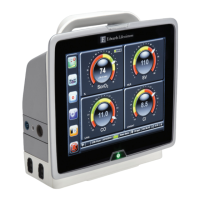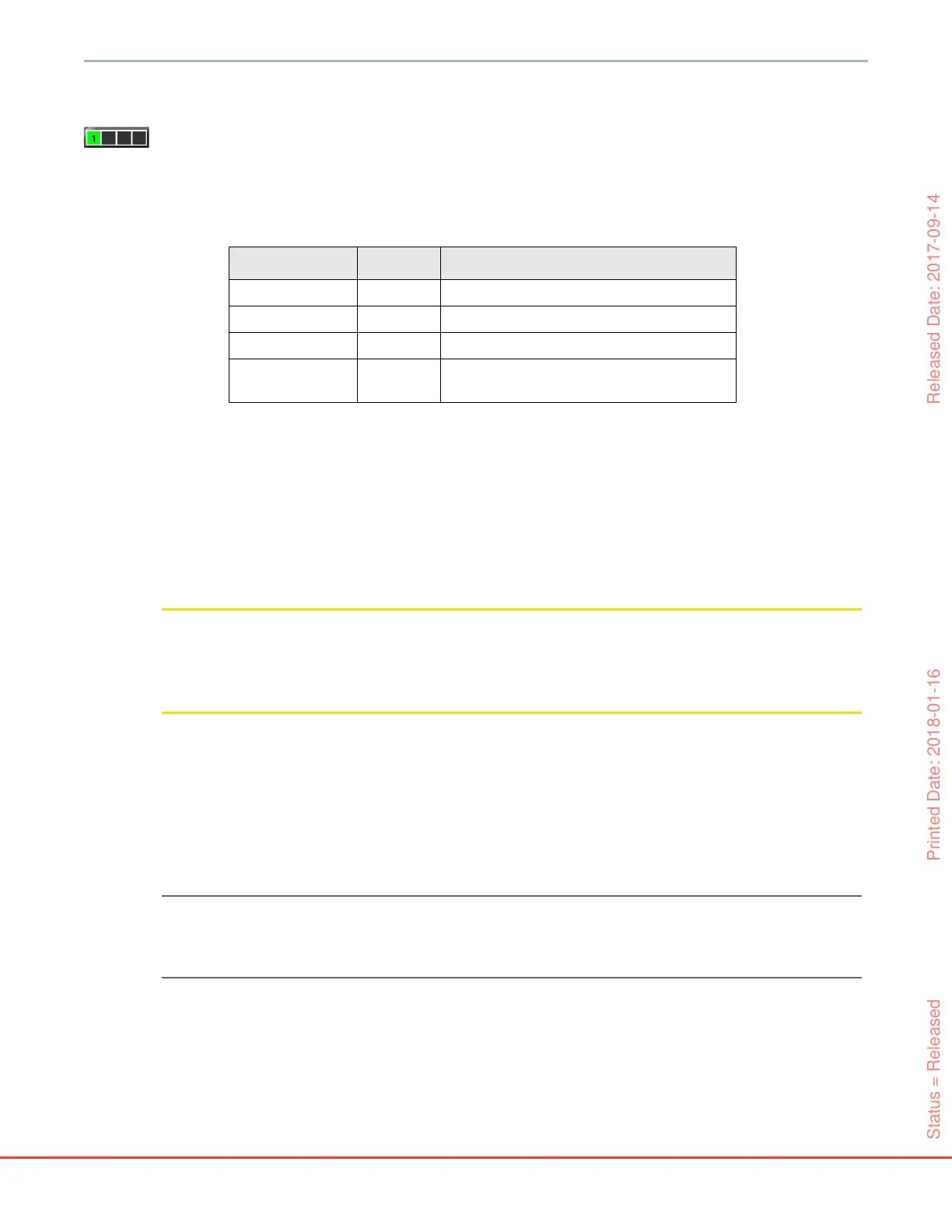147
HemoSphere Advanced Monitor 11 Oximetry Monitoring
11.4 Signal Quality Indicator
Signal quality indicator (SQI) is a reflection of the signal quality based on the catheter condition and position
within the vessel. The SQI bar boxes fill based on the level of oximetry signal quality with the level number
displayed in the left bar box. The SQI level is updated every two seconds after oximetry calibration is
complete and will display one of four signal levels as described in table 11-3.
Signal quality may be compromised by the following:
• Pulsatility (for example, the catheter tip is wedged)
• Signal Intensity (for example, the catheter is kinked, a blood clot, hemodilution)
• Intermittent vessel wall contact by the catheter
Signal quality is displayed during in vivo calibration and HGB update functions. It is recommended that
calibration be performed only when the SQI level is 1 or 2. When SQI is 3 or 4, see Oximetry Error Messages
on page 186 to determine and resolve the issue.
CAUTION The SQI signal is sometimes affected by the use of electrosurgical units. Attempt to
distance electrocautery equipment and cables from the HemoSphere advanced monitor
and plug the power cords into separate AC circuits if possible. If signal quality problems
persist, call your local Edwards representative for assistance.
11.5 Recall Oximetry Data
Recall Oximetry Data can be used to recall data from the oximetry cable after a patient has been
transported away from the HemoSphere advanced monitor. This allows the patients last calibration to be
recalled along with the patients demographic data for immediate oximetry monitoring. Calibration data
within the oximetry cable must be less than 24 hours old to use this function.
NOTE If patient data has already been entered into the HemoSphere advanced monitor, only
system calibration information is recalled. The HemoSphere oximetry cable is updated
with current patient data.
1 With the catheter connected to the HemoSphere oximetry cable, unplug the cable from the
HemoSphere advanced monitor and transport it with the patient. The catheter should not be
disconnected from the oximetry cable.
2 If the oximetry cable is being connected to another HemoSphere advanced monitor, make sure
that previous patient data is cleared.
Table 11-3 Signal quality indicator levels
Level Color
Description
1 - Normal Green All aspects of the signal are optimal
2 - Intermediate Green Indicates a moderately compromised signal
3 - Poor Yellow Indicates poor signal quality
4 - Unacceptable Red Indicates a severe problem with one or more
aspects of signal quality
Status = Released Printed Date: 2018-01-16 Released Date: 2017-09-14

